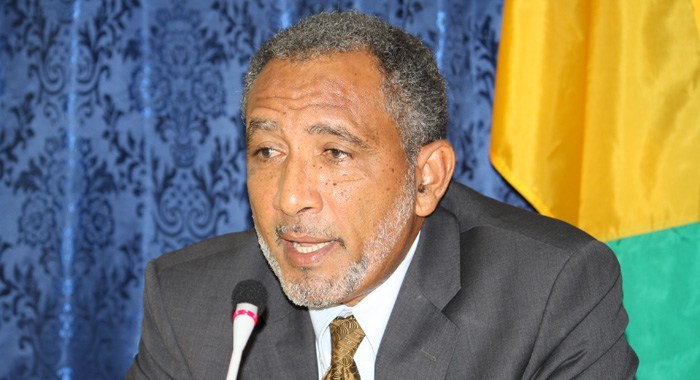On Saturday 14th March, 2020, Vincentians will celebrate National Heroes Day. A day when we reflect on the struggles of the Garifuna and the role that paramount Chief, the Rt. Excellent Joseph Chatoyer, played as they fought to fend off the French and British who sought to rob them of their rights, their land, their heritage and break their spirit.
The Garifuna were exiled by the British from St. Vincent (Yurumein) to Roatan Island, and over two hundred years after, Yurumein is still recognized as their Motherland. Our exiled Garifuna family has done remarkably well over the years. It is a remarkable story, not only of survival but they have gone way beyond that in growth and prosperity and the maintenance of their language and culture. Approximately five thousand Garifuna were sent to Balliceaux, and the estimated number now is over seven hundred thousand.
The Struggle
It is recorded that during the war with the British; the Black Caribs attacked from the Leeward side with Duvalle, and from the Windward side with Chief Chatoyer. Working his way along the coast. Chatoyer met up with his French supporters at Chateaubelair, and together the forces worked their way to Dorsetshire Hill, from where they would launch their attack on Kingstown. Chatoyer, from all historical accounts, was an intelligent and charismatic leader. His followers considered him to be invincible. However, it was reported that Chatoyer was killed on March 14th 1795, in a fight with British Major Leith.
In 1796, Lieutenant General Sir Ralph Abercrombie arrived in St. Vincent with a force of more than 4000 men, and forced the Carib leaders to surrender. The Caribs did not forget their allies, and insisted that the French be included in the negotiations. From this point on, the Black Caribs did their best to evade the British, disappearing for days at a time into the woods, prolonging the negotiations for surrender.
The sentiments among the British on the island were that the planters could no longer coexist with the Caribs. Sir William Young’s account of the Black Caribs in the island of St. Vincent, published in England in 1795, was a long history of the Black Caribs and English on St. Vincent, primarily justifying the actions taken by the English, and ending with a powerful argument that the Caribs needed to be removed from the island. Among his points were: “The Caribs combination of barbarous and of national enmity is not to be broken, and that the Caribs will ever be French. The nation can have no further confidence in the treaty. British planters would no longer have confidence returning to their plantations as long as they were still in fear of another Carib uprising”.
He ended the account with the statement: “Under all these circumstances and considerations, the Council and Assembly of St Vincent, in the instructions to their agent in London, declare the sole alternative to be, that the British planters, or the Black Caribs must be removed from the island of St Vincent”.
In the end, the sentiments prevailed, and the Black Caribs were forced to agree to an unconditional surrender, whereby they would be removed first to the island of Balliceaux, and then to the island of Roatan off the coast of Honduras. Even after the surrender, however, the Black Caribs did not accept this easily. After the Carib chiefs were sent back to report the decision to their people, with orders to respond within 4 days, the majority again disappeared into the woods and only 280 left for Balliceaux. Abercrombie’s troops were again sent to track down the natives and brought them in.
The Caribs responded as before, with an attempt at guerrilla warfare. This time the British responded by laying waste to the Caribs settlements and torching their provisions. At one point, Chatoyer’s son had offered to surrender along with his large number of followers, but had again disappeared before they could be conveyed off the island. In the end, however, the policy of burning provisions wore them down and the people became destitute. The British sent two of the captives from Balliceaux to the people to explain how well they were being treated, which turned out to be highly successful about 5080 Caribs turned themselves in. (Excerpts from St, Vincent and the Grenadines-a plural country and the Second Carib War)
Declaration of Intent
We recall that in 2015, the New Democratic Party (NDP) invited a Garifuna delegation to St. Vincent and the Grenadines. A number of activities were held; following which a Declaration of Intent was signed between the NDP and the Garifuna.
The declaration states that: the NDP and the Garifuna delegation hereby agree to deepen the relationship between the Garifuna nation and Yurumein in the following manner, by supporting and encouraging exchange programmes in the areas of culture, education, health and sports; developing and disseminating the Garifuna language and culture in Yurumein and in Garifuna populations elsewhere; forging alliances for the purposes of trade in goods and services, with great emphasis being placed on tourism; highlighting the socio-economic and socio-political under which Garifuna exist in Yurumein and elsewhere; strengthening the spiritual bond and re-establishing the historical link between the inhabitants of Yurumein and the Garifuna nation and the collaborative efforts mentioned will be pursued within the context of the Honorary Citizenship programme.
The NDP and the Garifuna delegation do promise to continue collaborative efforts to expedite the process of building closer ties with each other and realizing the dream of making St. Vincent and the Grenadines the spiritual home of all Garifuna at home and abroad.
In responding to the NDP’s proclamation, Dr. Gonsalves and the ULP sought to lengthen our separation by conjuring fears that the Garifuna honorary citizens will come to take away our jobs, our lands and our houses. What a shame! We must reiterate that the NDP is committed to working closer with our Garifuna brothers and sisters when it returns to office.


